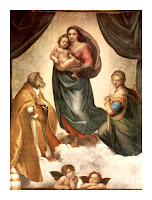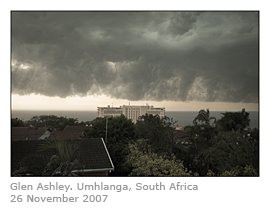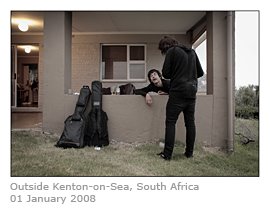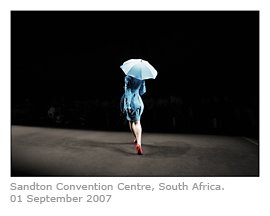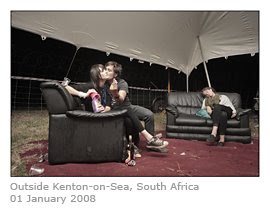
Been laying low after the exhibition... taking a bit of a rest. Am back now, after a mild bout of sickness and interviews... started work on the next project today and am feeling good.
There will be much more to come on this blog, in the run-up to the artist walkthroughs and such. But first, thanks to:
All those who came to the opening, who wished me well in person, via sms or on Facebook on the night... I have been trying to collate a list, but I have lost track... I hope you all know who you are.
My Dad, for sms dryness, my Mom for being there in person, my wife for saying she's proud of me.
Gavin, for all the support and hands-on involvement, and for shooting enough on the night that I didn't have to.
Zander, for coming outside.
Michael MacGarry, for being a hard man to track down, having a workload second to none, and STILL managing to tie in all his loose ends (and a podcast recording) to boot.
Tim, Lee-Ann and Karin, the Rooke "staff" for putting up with my OCD catalogue assembly.
Kidofdoom, for playing that night, for Richard's warm words and Ryk's beer joke. It should have been cider, it was so dry.
Van Coke Kart(et)al, for rolling in like a mafia movie, even if Francois was grinning and waving like Corky Romano.
Red Bull and their crew (Sibu in particular) for contributing on the night and for rolling deep in support.
John of Wet Ink, who got thanked indirectly on the catalogue but who worked like a demon once it was set to get it all done in time.
Those who bought works on the night... I know it is not the norm necessarily to sell on opening, but you helped my nerves somewhat, somehow.
Chris and Sylvia's friend (whose name I now forgot) for expressing what I hoped would've been seen on one level... all these people are connected, all these images are of life.
Thanks again.






